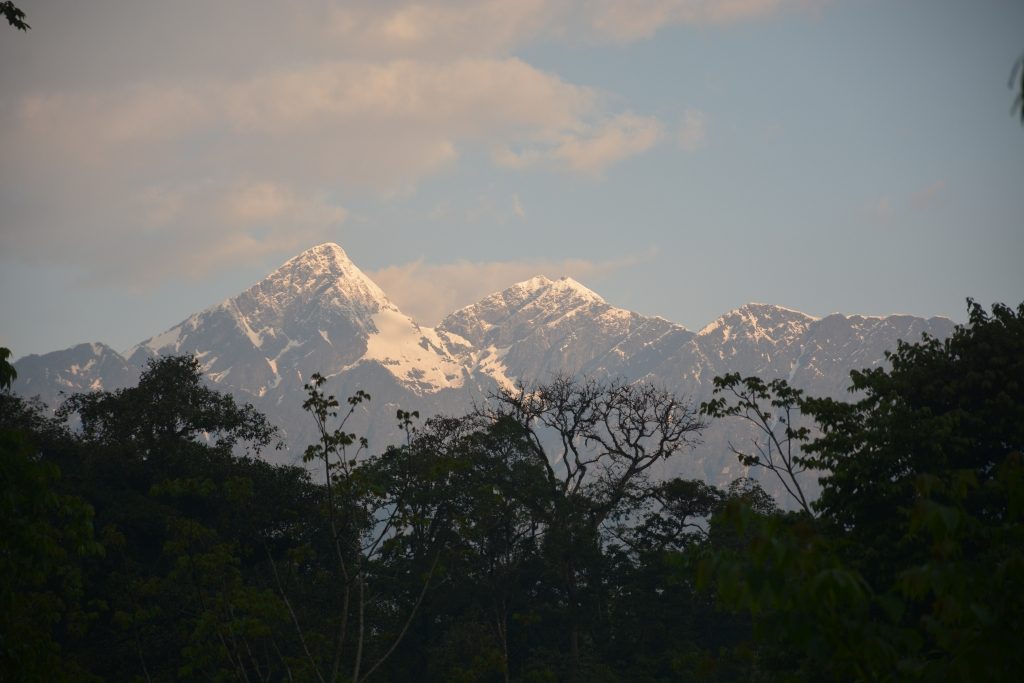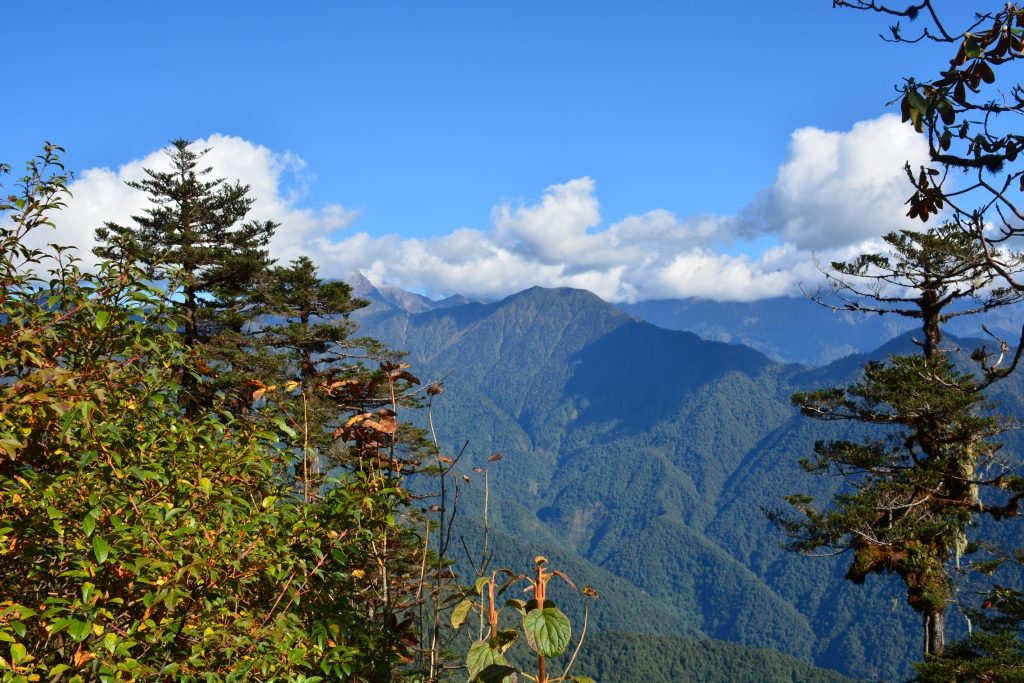
The flora of Myanmar is very diverse, in large parts intact, and has been overlooked for decades in terms of taxonomic research and publications. Researchers estimate that around 30% of endemic herbaceous species have only been collected once, and are thus known from just a single herbarium specimen.
To begin addressing this knowledge gap, a collaborative project funded by US National Science Foundation between the Royal Botanic Garden Edinburgh (RBGE),New York Botanic Garden (NYBG), Wildlife Conservation Society, and the Myanmar Forest Department is producing the first botanical inventory of the highly diverse Northern Forest Complex (NFC) in the Hkakaborazi-Hponganrazi landscape, Myanmar. (https://www.nsf.gov/awardsearch/showAward?AWD_ID=1457702).
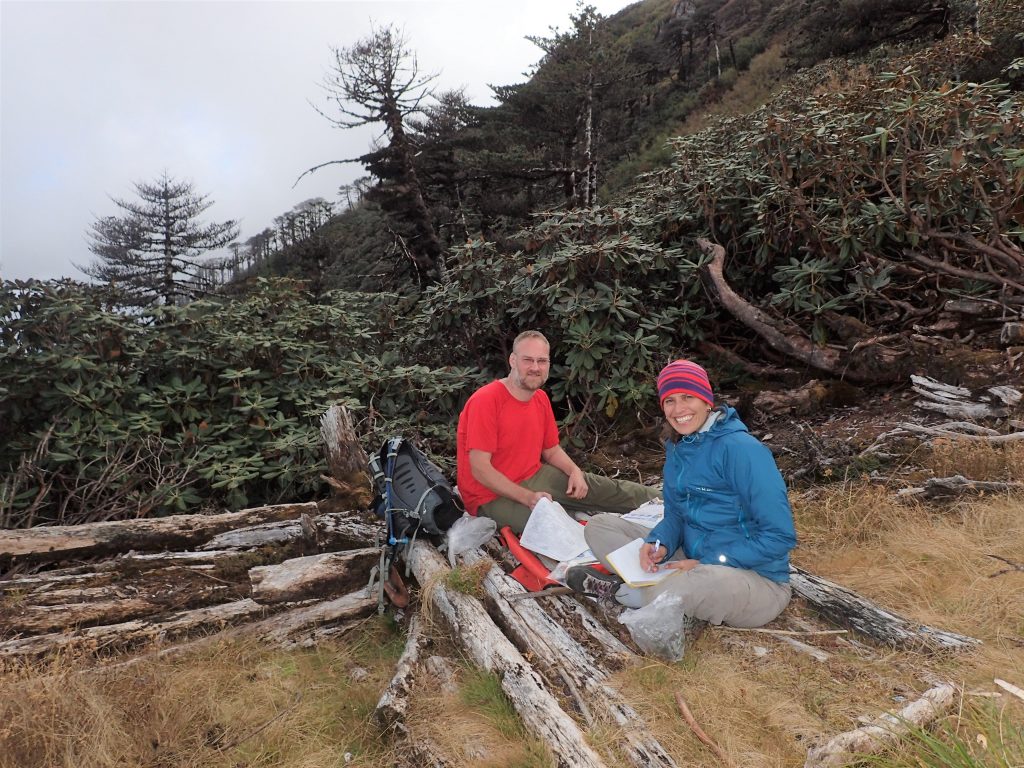
The NFC hosts the largest remaining tracts of virgin forest in mainland Southeast Asia and forms a Key Biodiversity Area of the Indo-Myanmar hotspot containing an estimated 6000 species of which 1,500 exist nowhere else in the world. This project aims to inventory the flora of a portion of the NFC through a specimen-based checklist. The project also involves training a cohort of Myanmar botanists, and building capacity in the Forest Research Herbarium in Nay Pyi Taw.
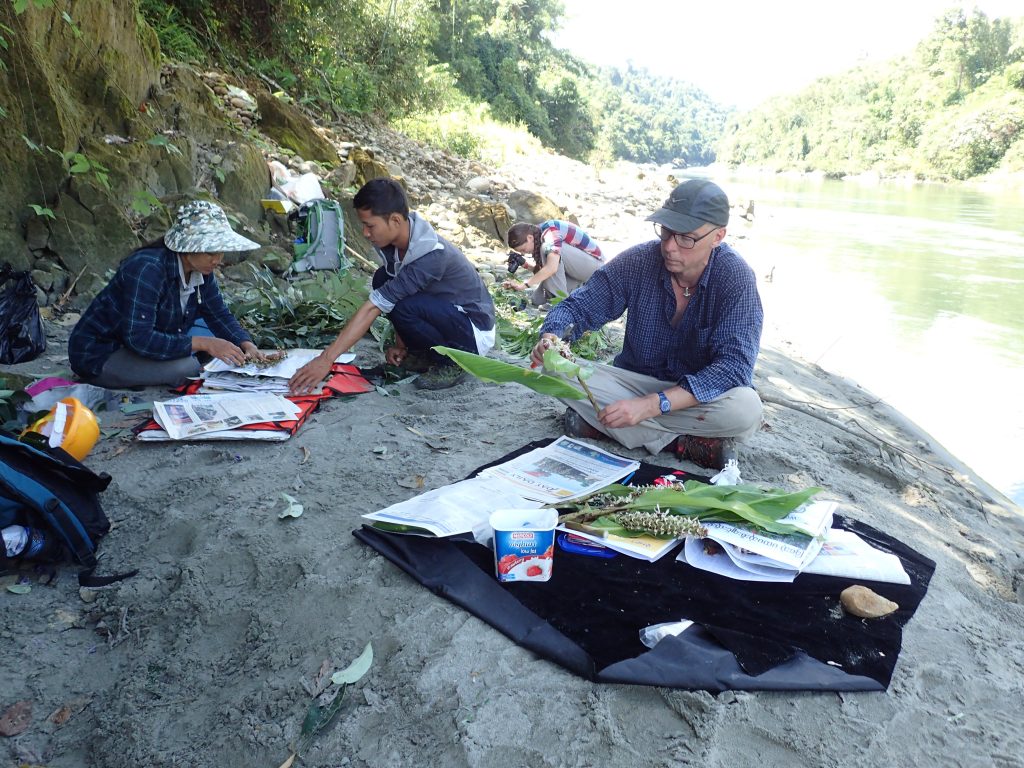
Phyu Phyu Hnin (Forest Research Institute, left), Tu Naing (local Forest Ranger, right) and Kate Armstrong (NYBG, background) collecting specimens in Myanmar. Axel is pressing a new ginger record for Myanmar of Larsenianthus careyanus
(Benth.) W.J.Kress & Mood
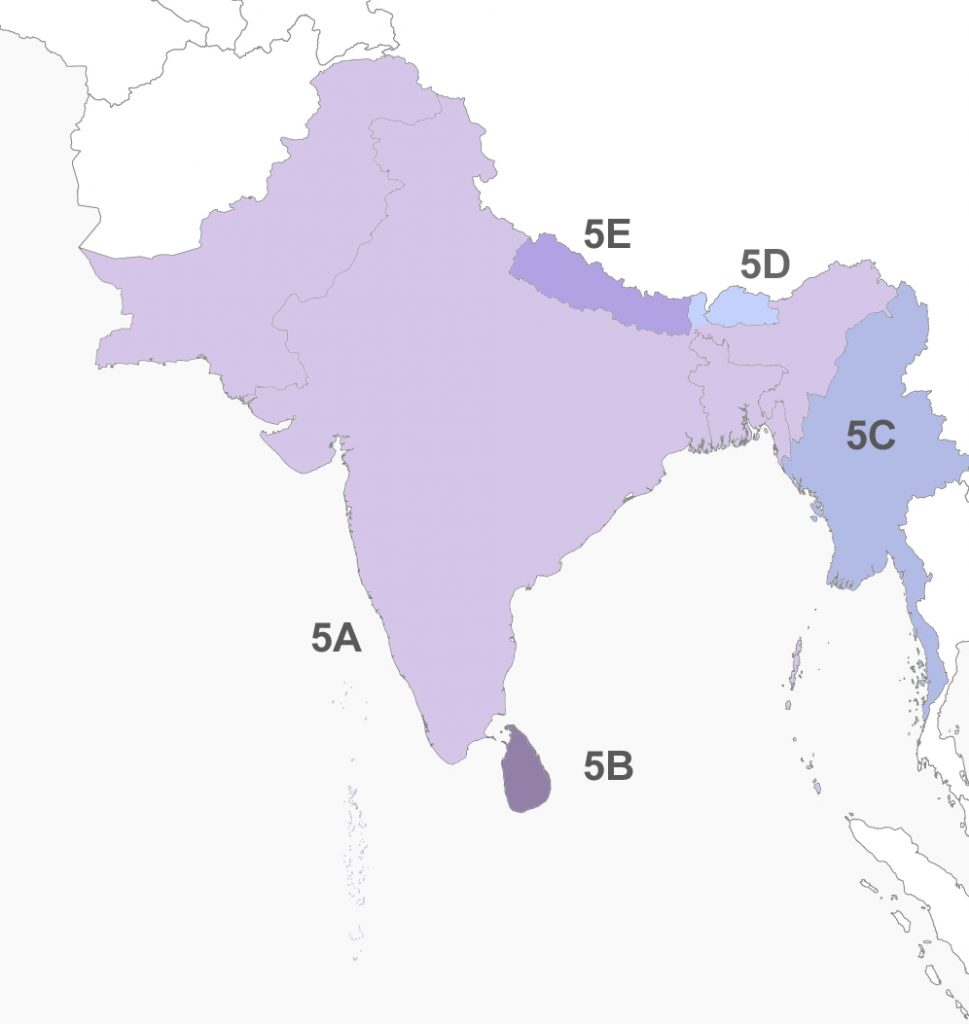
A botanical inventory is the first important step towards producing a Flora. It is an active data gathering exercise and involves documentation of pre-existing herbarium specimens from the geographical region of interest. Researchers are adding herbarium specimens to these pre-existing collections by sampling broadly throughout the NFC region at different times of the year in order to obtain a comprehensive and accurate picture of the species that exist there. These new collections will be the first to occur since the early 20th century. Once the specimens are confidently identified to species level a checklist of vascular plants can be created which will make the next step of creating a Flora for Myanmar possible.
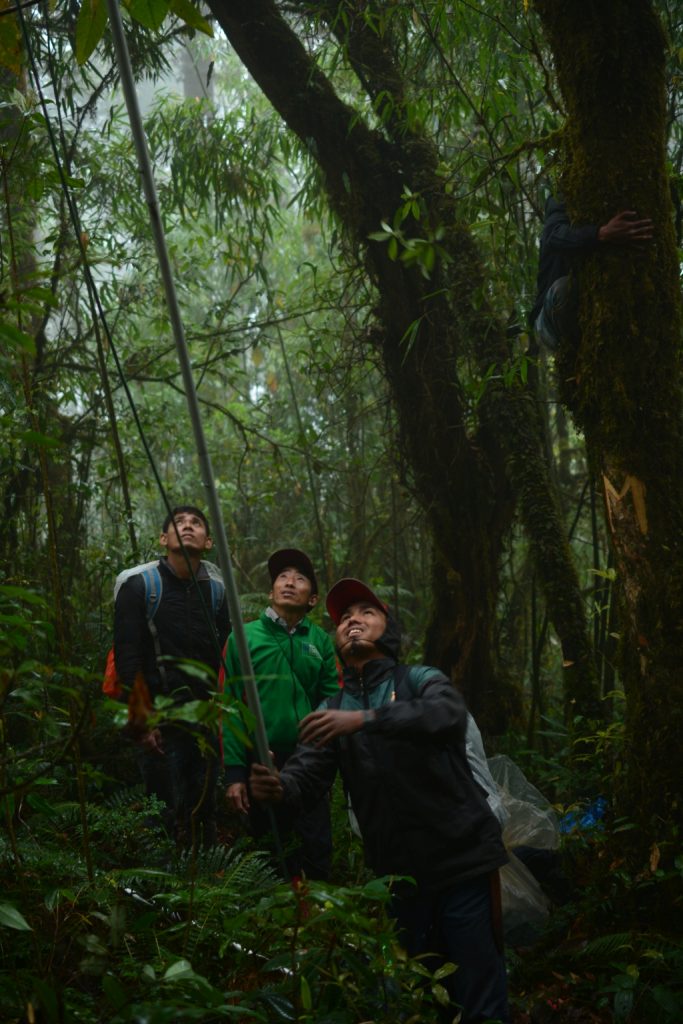
The volunteer project at RBGE of splitting South Asian material in herbarium region 5 into 5 sub-regions has made the digitisation of Myanmar herbarium specimens much easier. You can read more about that project here.
Important collections of herbarium specimens at RBGE from Myanmar date back to the mid-19th century, and include specimens from Lace, Kurz, Griffith, Helfer and Wallich, primarily from the southern part of the country.
Collections of the early “plant hunters” in the first half of the 20th century – Kingdon-Ward, Farrer and Forrest – form the first botanical records for the Northern Forest Complex (NFC). Most of these collections do not have duplicates in Myanmar, and many have not been examined taxonomically since they were collected. These specimens have the potential to be new species records for the country and this makes digitising them a priority.
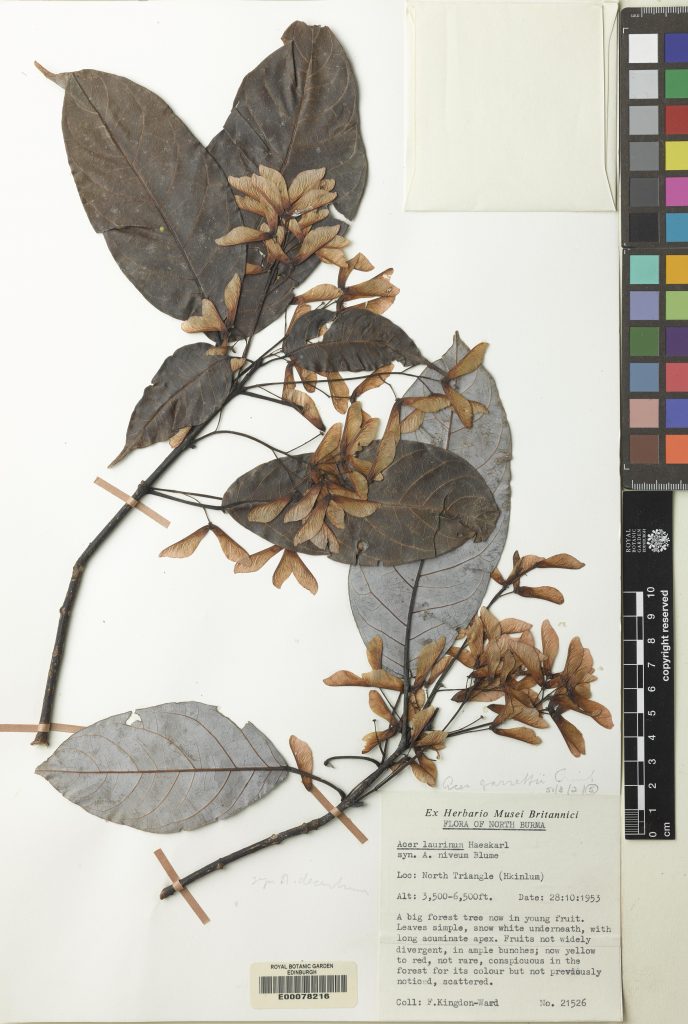
Acer laurinum Haeskarl, collected in Myanmar in 1953.
Since 2017 NYBG alongside RBGE staff and the South Asia Recuration project volunteers have been helping us to digitise our vascular plant herbarium specimens from Myanmar. So far we have 15,359 herbarium specimens recorded in our collections database from Myanmar, 14,792 of which are flowering plants and 401 are ferns and fern allies. We estimate that there are approximately a further 2,228 flowering plant specimens that have not yet been digitised (neither databased nor imaged).
Explore our progress through an interactive data visualisation by clicking here!
The digitised specimens will be georeferenced and made available on an online data portal to the Flora of Myanmar. Pulling this information together in an online portal will make it possible to create the first specimen-based checklist for the Hkakaborazi-Hponganrazi landscape. Specimen data will also provide the baseline information required to make planning decisions affecting the NFC ecosystem, and facilitate broad scale analyses of plant diversity patterns within Southeast Asia.
